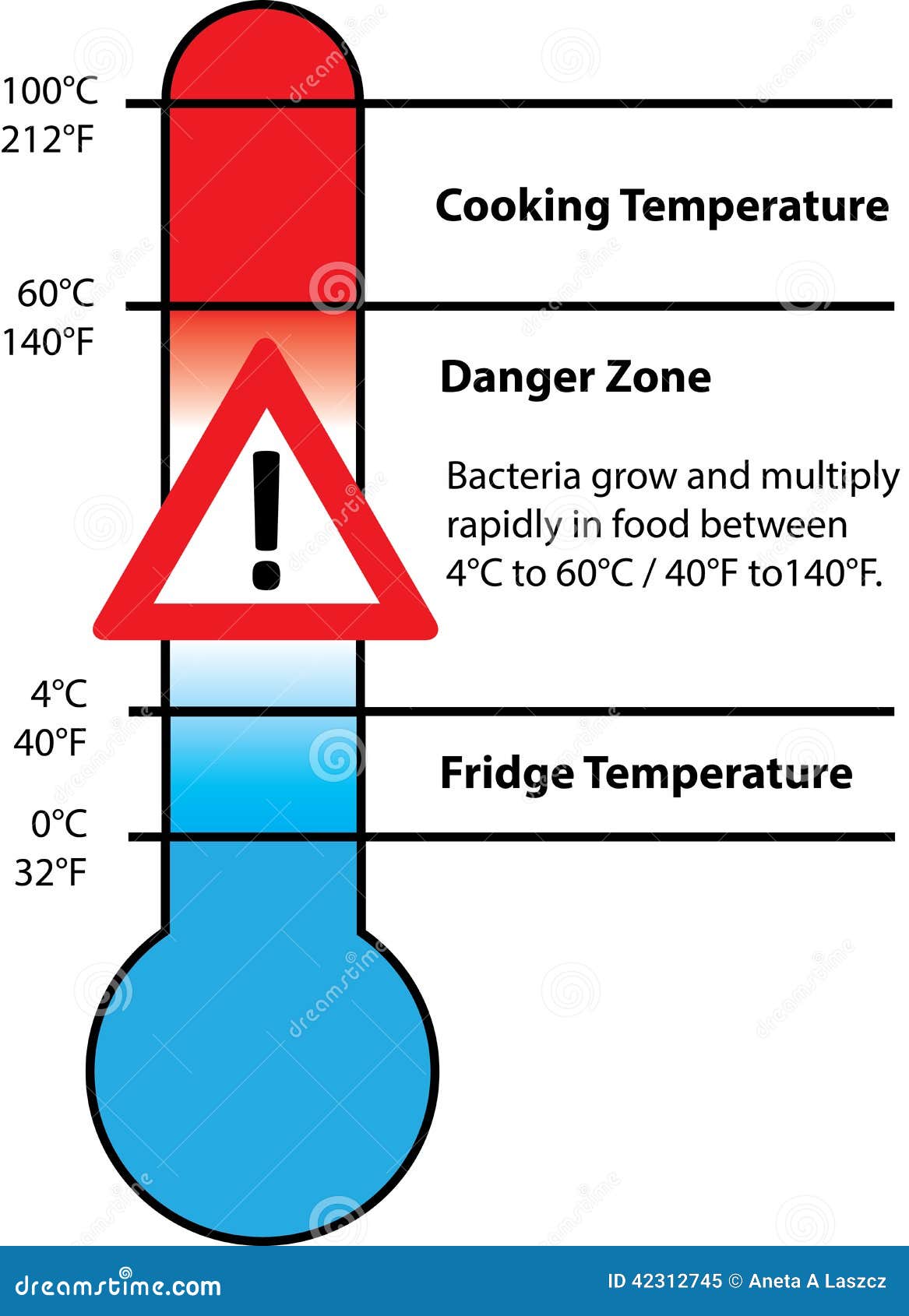Dangerous temperatures. Extreme Temperature Safety: Protecting Your Health in Hot and Cold Weather
How does extreme heat affect the human body. What are the symptoms of heat-related illnesses. How can you prevent heat exhaustion and heatstroke. What precautions should you take in extremely cold temperatures. How does wind chill impact cold weather safety.
Understanding the Impact of Extreme Temperatures on Human Health
Extreme temperatures, both hot and cold, can pose significant risks to human health. The human body maintains a delicate balance, with a normal core temperature ranging between 97°F and 99°F (36.1°C to 37.2°C). To maintain this temperature without external assistance, the surrounding environment ideally needs to be around 82°F (28°C). However, we often encounter conditions far from this ideal, necessitating adaptation and precautionary measures.
The apparent temperature, or how hot or cold it feels, is not always the same as the actual air temperature. Factors such as humidity and wind chill can significantly alter our perception and the impact of temperature on our bodies. For instance, an air temperature of 85°F (29°C) with 80% humidity can feel like 97°F (36°C), dramatically increasing the risk of heat-related illnesses.

The Dangers of Extreme Heat: Recognizing and Responding to Heat-Related Illnesses
As temperatures rise, so does the risk of heat-related illnesses. These conditions can range from mild discomfort to life-threatening emergencies. Understanding the spectrum of heat-related illnesses is crucial for prevention and timely intervention.
Heat Exhaustion: Symptoms and Treatment
Heat exhaustion occurs when the body overheats and cannot cool itself effectively. Common symptoms include:
- Heavy sweating
- Fatigue or exhaustion
- Dizziness or lightheadedness
- Weak but rapid pulse
- Nausea or vomiting
- Muscle cramps
If you suspect heat exhaustion, it’s essential to act quickly. Move to a cooler location, preferably air-conditioned. Apply cool, damp cloths to the skin and sip water slowly. Rest and monitor symptoms closely. If conditions worsen or don’t improve within an hour, seek medical attention.
Heatstroke: A Medical Emergency
Heatstroke is a severe and potentially fatal condition that occurs when the body’s temperature regulation system fails. Symptoms of heatstroke include:

- Body temperature above 103°F (39.4°C)
- Hot, red, dry, or damp skin
- Rapid and strong pulse
- Confusion or loss of consciousness
Heatstroke is a medical emergency requiring immediate action. Call emergency services immediately. While waiting for help, move the person to a cooler environment and attempt to lower their body temperature using cool cloths or a cool bath. Do not give fluids to a person showing signs of heatstroke.
Preventing Heat-Related Illnesses: Strategies for Staying Safe in Hot Weather
Prevention is key when it comes to heat-related illnesses. By taking proactive measures, you can significantly reduce your risk of heat exhaustion and heatstroke.
Hydration: The First Line of Defense
Proper hydration is crucial in hot weather. Drink plenty of fluids, even if you don’t feel thirsty. Water is the best choice, but electrolyte-rich beverages can be beneficial during prolonged exposure to heat or intense physical activity. How much should you drink? A good rule of thumb is to consume enough fluids that your urine remains light-colored or clear.

Dressing for the Heat
Your choice of clothing can significantly impact your body’s ability to regulate temperature. Opt for loose-fitting, lightweight, and light-colored clothing in hot weather. These qualities allow for better air circulation and reflect sunlight, helping to keep you cooler. Don’t forget to protect your head and face with a wide-brimmed hat and sunglasses.
Timing Your Activities
When possible, schedule outdoor activities during cooler parts of the day, typically early morning or evening. If you must be outside during peak heat hours, take frequent breaks in shaded or air-conditioned areas. Gradually increase the duration and intensity of your outdoor activities to allow your body to acclimate to the heat.
Cold Weather Hazards: Understanding and Mitigating the Risks of Extreme Cold
While heat-related illnesses often receive more attention, extreme cold can be equally dangerous. Cold weather poses unique risks to human health, including hypothermia and frostbite.
Hypothermia: When the Body Loses Heat Faster Than It Can Produce It
Hypothermia occurs when your body temperature drops below 95°F (35°C). Early symptoms include:
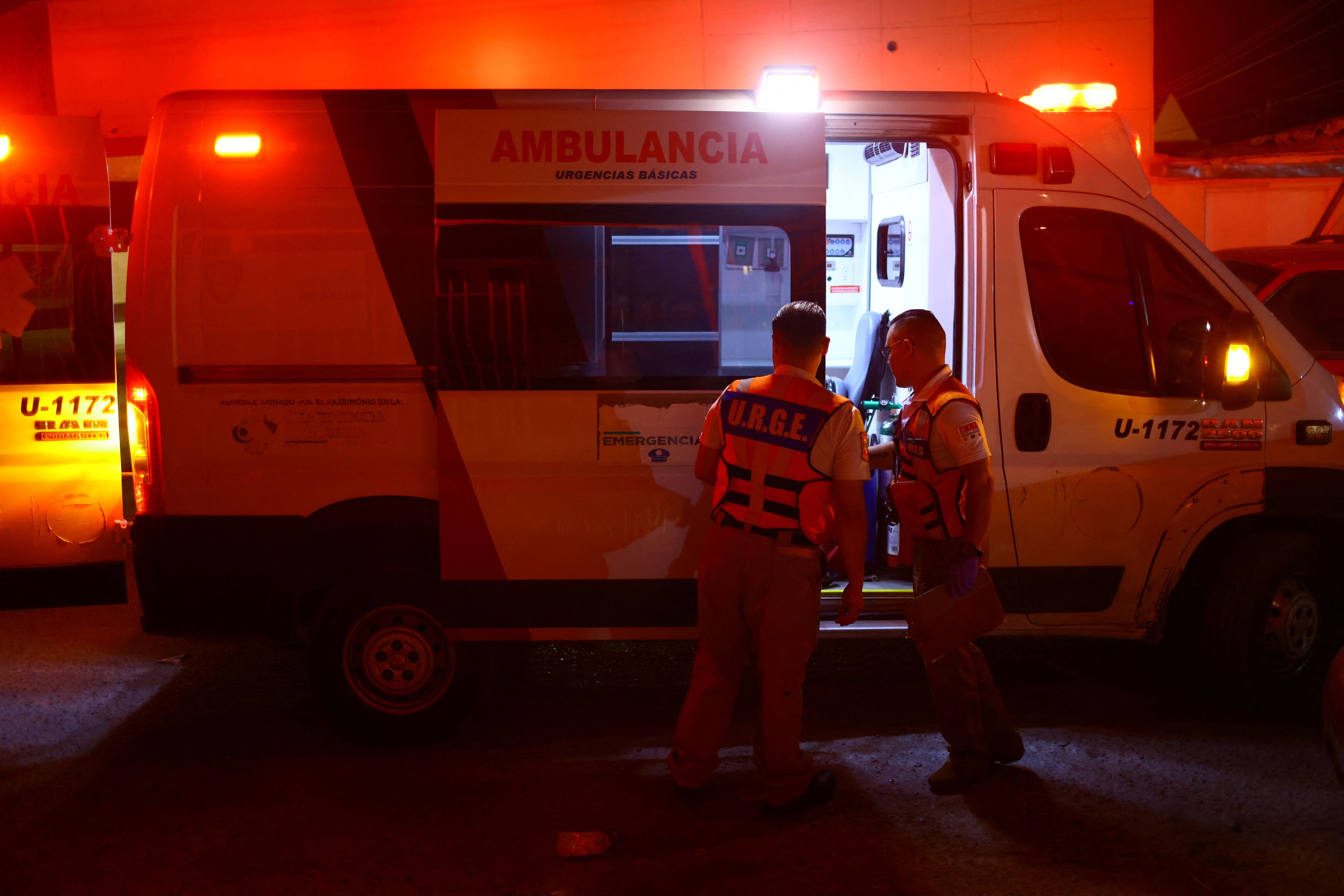
- Shivering
- Fatigue
- Confusion
- Fumbling hands
- Memory loss
- Slurred speech
As hypothermia progresses, shivering may stop, and the person may lose consciousness. Immediate medical attention is crucial. While waiting for help, move the person to a warm area, remove wet clothing, and warm the center of the body first.
Frostbite: When Skin and Underlying Tissues Freeze
Frostbite most commonly affects extremities like fingers, toes, nose, ears, cheeks, and chin. Symptoms include:
- Redness or pain in any skin area
- White or grayish-yellow skin
- Skin that feels unusually firm or waxy
- Numbness
If you suspect frostbite, seek medical care immediately. While waiting for help, do not rub the affected area, as this can cause more damage. Instead, immerse the area in warm (not hot) water or use body heat to warm it.
Wind Chill: The Hidden Danger in Cold Weather
Wind chill is the temperature it “feels like” when you factor in the wind. As wind speeds increase, heat is carried away from the body more rapidly, lowering the skin temperature and eventually the internal body temperature. This can lead to a higher risk of frostbite and hypothermia.
![]()
For example, if the air temperature is 0°F (-18°C) and the wind speed is 15 mph, the wind chill temperature is -19°F (-28°C). At this wind chill temperature, exposed skin can freeze in 30 minutes.
Understanding Wind Chill Charts
Wind chill charts provide valuable information for assessing cold weather risks. These charts typically show the relationship between air temperature and wind speed, indicating how long it takes for frostbite to occur on exposed skin. Familiarizing yourself with these charts can help you make informed decisions about outdoor activities in cold weather.
Cold Weather Safety: Essential Strategies for Staying Warm and Healthy
Protecting yourself in cold weather requires a combination of proper clothing, awareness, and preparedness. Here are some key strategies:
Layering: The Key to Effective Cold Weather Dressing
Layering your clothing is one of the most effective ways to stay warm in cold weather. The layers should include:
- Base layer: Moisture-wicking material to keep sweat away from your skin
- Insulating layer: Materials like fleece or wool to trap warm air
- Outer layer: Waterproof and windproof material to protect against the elements
Remember to cover extremities with warm socks, insulated boots, gloves, and a hat or beanie. A significant amount of body heat is lost through the head, so keeping it covered is crucial.

Stay Dry to Stay Warm
Moisture is the enemy of warmth in cold weather. Wet clothing, whether from sweat or environmental factors, can rapidly cool your body. Change out of wet clothes as soon as possible, and consider carrying spare dry socks and gloves if you’ll be outside for extended periods.
Nutrition and Hydration in Cold Weather
Proper nutrition and hydration are just as important in cold weather as they are in hot conditions. Your body burns more calories to stay warm in cold weather, so ensure you’re eating enough, particularly if engaging in outdoor activities. While it’s easy to forget about hydration in cold weather, it’s still crucial. Dehydration can increase your risk of hypothermia.
Special Considerations: Protecting Vulnerable Populations in Extreme Temperatures
Certain groups are particularly vulnerable to the effects of extreme temperatures. These include:
- Older adults
- Young children
- People with chronic medical conditions
- Outdoor workers
- Athletes
- Homeless individuals
If you or someone you know falls into one of these categories, it’s essential to take extra precautions during extreme weather events. This might include more frequent check-ins, ensuring access to heating or cooling facilities, and being extra vigilant for signs of heat or cold-related illnesses.

Community Resources and Support
Many communities offer resources to help vulnerable populations during extreme weather events. These might include:
- Cooling centers during heat waves
- Warming shelters during extreme cold
- Transportation assistance to reach these facilities
- Home energy assistance programs
Familiarize yourself with the resources available in your community and don’t hesitate to use them or help others access them when needed.
Climate Change and Extreme Temperatures: Preparing for a Changing World
As our climate continues to change, extreme temperature events are becoming more frequent and severe. This shift necessitates a proactive approach to temperature safety.
Adapting to a Warming World
Climate change is leading to more frequent and intense heat waves in many parts of the world. Adapting to this new reality involves both individual and community-level actions:
- Improving urban planning to reduce heat island effects
- Enhancing building designs for better temperature regulation
- Developing more robust early warning systems for extreme weather events
- Educating communities about the risks of extreme heat and effective prevention strategies
The Paradox of Cold Snaps in a Warming World
While global temperatures are rising overall, climate change can also lead to more extreme cold events in some regions. This paradox underscores the importance of being prepared for a wide range of temperature extremes, even as average temperatures increase.

As we navigate this changing climate landscape, staying informed about local weather patterns and long-term climate trends becomes increasingly important. This knowledge can help us better prepare for and adapt to extreme temperature events, protecting our health and well-being in the face of environmental challenges.
Hot and Cold: Extreme Temperature Safety
Hot and Cold: Extreme Temperature Safety
- Health Conditions
- Featured
- Breast Cancer
- IBD
- Migraine
- Multiple Sclerosis (MS)
- Rheumatoid Arthritis
- Type 2 Diabetes
- Articles
- Acid Reflux
- ADHD
- Allergies
- Alzheimer’s & Dementia
- Bipolar Disorder
- Cancer
- Crohn’s Disease
- Chronic Pain
- Cold & Flu
- COPD
- Depression
- Fibromyalgia
- Heart Disease
- High Cholesterol
- HIV
- Hypertension
- IPF
- Osteoarthritis
- Psoriasis
- Skin Disorders and Care
- STDs
- Featured
- Discover
- Wellness Topics
- Nutrition
- Fitness
- Skin Care
- Sexual Health
- Women’s Health
- Mental Well-Being
- Sleep
- Product Reviews
- Vitamins & Supplements
- Sleep
- Mental Health
- Nutrition
- At-Home Testing
- CBD
- Men’s Health
- Original Series
- Fresh Food Fast
- Diagnosis Diaries
- You’re Not Alone
- Present Tense
- Video Series
- Youth in Focus
- Healthy Harvest
- No More Silence
- Future of Health
- Wellness Topics
- Plan
- Health Challenges
- Mindful Eating
- Sugar Savvy
- Move Your Body
- Gut Health
- Mood Foods
- Align Your Spine
- Find Care
- Primary Care
- Mental Health
- OB-GYN
- Dermatologists
- Neurologists
- Cardiologists
- Orthopedists
- Lifestyle Quizzes
- Weight Management
- Am I Depressed? A Quiz for Teens
- Are You a Workaholic?
- How Well Do You Sleep?
- Tools & Resources
- Health News
- Find a Diet
- Find Healthy Snacks
- Drugs A-Z
- Health A-Z
- Health Challenges
- Connect
- Breast Cancer
- Inflammatory Bowel Disease
- Psoriatic Arthritis
- Migraine
- Multiple Sclerosis
- Psoriasis
Medically reviewed by Elaine K. Luo, M.D. — By The Healthline Editorial Team — Updated on September 17, 2018
Luo, M.D. — By The Healthline Editorial Team — Updated on September 17, 2018
Overview
If you’re planning to travel outdoors, be prepared to deal with all sorts of weather. This might mean extremely rainy days or extremely dry days, and from the hottest daytime hours to the coldest nights.
The human body has a normal core temperature between 97˚F and 99˚F, but on average, a normal body temperature is 98.6˚F (37˚C). To maintain this temperature without the help of warming or cooling devices, the surrounding environment needs to be at about 82˚F (28˚C). Clothes aren’t just for looks — they’re necessary to keep warm. You can usually bundle up in more layers during colder months, and you can use fans or air conditioners in warmer months to maintain a healthy core temperature.
In some cases, you may find yourself in an environment with extreme temperatures. It’s crucial to know what health concerns you may face as well as how to avoid any temperature-related health problems.
First, note that the temperature reading on a thermometer is not necessarily the temperature that you should be concerned about. The relative humidity in your environment can affect the temperature you actually feel, which is called the “apparent temperature.” Some example scenarios include:
- If the air temperature reads 85˚F (29˚C), but there’s zero humidity, the temperature will actually feel like it’s 78˚F (26 ˚C).
- If the air temperature reads 85˚F (29˚C), with 80 percent humidity, it will actually feel like 97˚F (36˚C).
High environmental temperatures can be dangerous to your body. In the range of 90˚ and 105˚F (32˚ and 40˚C), you can experience heat cramps and exhaustion. Between 105˚ and 130˚F (40˚ and 54˚C), heat exhaustion is more likely. You should limit your activities at this range. An environmental temperature over 130˚F (54˚C) often leads to heatstroke.
Other heat-related illnesses include:
- heat exhaustion
- heatstroke
- muscle cramps
- heat swelling
- fainting
Symptoms
Symptoms of heat-related illness depend on the type and the severity of the illness.
Some common symptoms of heat exhaustion include:
- sweating heavily
- exhaustion or fatigue
- dizziness or lightheadedness
- blacking out or feeling dizzy when standing up
- weak but fast pulse
- feelings of nausea
- vomiting
Symptoms of heatstroke include:
- reddish skin that feels hot to the touch
- strong and fast pulse
- losing consciousness
- internal body temperature over 103˚F (39˚C)
Treatment
If someone loses consciousness and shows one or more of the symptoms of heat exhaustion or heat stroke, call 911 right away.
To treat heat exhaustion, try to keep yourself cool with cold, damp cloths around your body and slowly take small sips of water until the symptoms begin to fade. Try to get out of the heat. Find some place with air conditioning or a lower temperature (especially out of direct sunlight). Rest on a couch or bed.
To treat heatstroke, cover yourself with cold, damp cloths or take a cold bath to normalize your body temperature.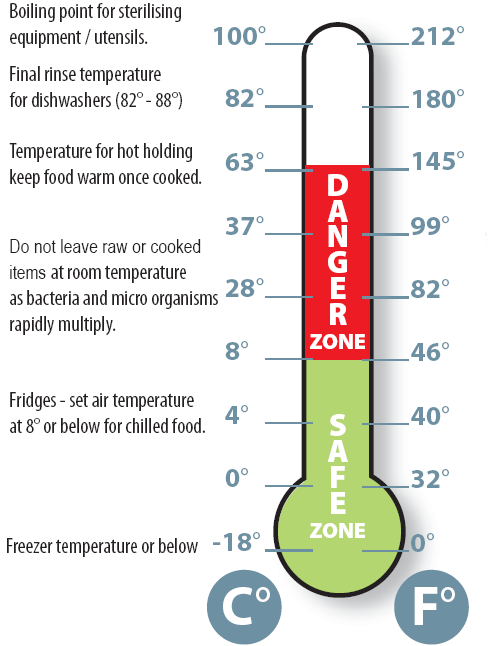 Get out of the heat immediately to a place with a lower temperature. Don’t drink anything until you (or the person experiencing heatstroke) receive medical attention.
Get out of the heat immediately to a place with a lower temperature. Don’t drink anything until you (or the person experiencing heatstroke) receive medical attention.
Prevention
Stay well-hydrated to best avoid heat-related illness. Drink enough fluids so that your urine is light-colored or clear. Don’t rely solely on thirst as a guide to how much liquid you should be drinking. When you lose a lot of fluids or sweat profusely, be sure to replace electrolytes as well.
Wear clothing that is appropriate to your environment. Clothes that are too thick or too warm can quickly cause you to become overheated. If you feel yourself getting too hot, loosen your clothing or remove excess clothing until you feel cool enough. Wear sunscreen when possible to avoid sunburn, which makes it harder for your body to get rid of excess heat.
Try to avoid places that can get extremely hot, such as inside cars. Never leave another person, child, or pet, even for short periods of time.
Risk factors
Common risk factors that can cause you to be more susceptible to heat-related illness include:
- being younger than 4 or older than 65
- exposure to abrupt weather changes from cold to hot
- being overweight or obese
- taking medications such as diuretics and antihistamines
- using illicit drugs such as cocaine
- exposure to a high heat index (measurement of both heat and humidity)
As with high temperatures, don’t rely solely on the thermometer reading of environmental air for gauging cold temperatures. The speed of the wind and external body moisture can cause a chill that dramatically changes your body’s rate of cooling and how you feel. In extremely cold weather, especially with a high wind chill factor, you can quickly experience the onset of hypothermia. Falling into cold water can also result in immersion hypothermia.
Some cold-related illnesses include:
- hypothermia
- frostbite
- trench foot (or “immersion foot”)
- chilblains
- Raynaud’s phenomenon
- cold-induced hives
In addition to these illnesses, winter weather can cause major inconveniences for travelers. Always be prepared to deal with heavy snow and extreme cold, whether you’re on the road or at home.
Always be prepared to deal with heavy snow and extreme cold, whether you’re on the road or at home.
Symptoms
When your body first drops below 98.6˚F (37˚C), you may experience:
- shivering
- an increased heart rate
- a slight decrease in coordination
- an increased urge to urinate
When your body temperature is between 91.4˚ and 85.2˚F (33˚ and 30˚C), you’ll:
- decrease or stop shivering
- fall into a stupor
- feel drowsy
- be unable to walk
- experience quick alternations between rapid heart rate and breathing too slowly
- shallow breathing
Between 85.2˚ and 71.6˚F (30˚C and 22˚C), you’ll experience:
- minimal breathing
- poor to no reflexes
- inability to move or respond to stimuli
- low blood pressure
- possibly coma
A body temperature below 71.6˚F (22˚C) can result in muscles becoming rigid, blood pressure becoming extremely low or even absent, heart and breathing rates decreasing, and it can ultimately lead to death.
Treatment
If someone passes out, shows multiple symptoms listed above, and has a body temperature of 95˚F (35˚C) or lower, call 911 immediately. Perform CPR if the person isn’t breathing or doesn’t have a pulse.
To treat hypothermia, get out of the cold as soon as possible and to a warmer environment. Remove any damp or wet clothing and start warming up the middle areas of your body, including your head, neck, and chest, with a heating pad or against the skin of someone with a normal body temperature. Drink something warm to gradually increase your body temperature, but don’t have anything alcoholic.
Even after you begin to feel warm again, stay dry and keep yourself wrapped up in a warm blanket. Seek medical help right away to minimize the harm to your body.
To treat frostbite, soak the affected area in warm water no hotter than 105˚F (40˚C) and wrap it in gauze. Keep any toes or fingers affected by frostbite separated from each other to avoid rubbing the areas against each other. Do not rub, use, or walk on frostbitten skin, as this can cause tissue damage. See your doctor if you still can’t feel anything on your frostbitten skin after 30 minutes.
Do not rub, use, or walk on frostbitten skin, as this can cause tissue damage. See your doctor if you still can’t feel anything on your frostbitten skin after 30 minutes.
Prevention
It’s essential to protect anyone experiencing early symptoms of hypothermia. If possible, remove them from the cold immediately. Don’t try to warm a person suffering from serious hypothermia with vigorous exercise or rubbing, as this can lead to further problems.
To prevent cold-related illness, take one or more of these measures when the temperature starts to drop:
- eat substantial meals regularly and drink plenty of water
- avoid drinks with alcohol or caffeine
- remain inside near a source of heat
- wear a hat, beanie, or something similar on your head to retain heat and gloves or mittens on your hands
- wear multiple layers of clothing
- use lotion and lip balm to prevent dryness of your skin and lips
- bring extra clothes to change into in case you get damp or wet
- wear sunglasses when it’s snowing or extremely bright outside to avoid snow blindness
Risk factors
Common risk factors for hypothermia and frostbite include:
- being younger than 4 or older than 65
- consuming alcohol, caffeine, or tobacco
- being dehydrated
- exposing skin to extremely cold temperatures, especially when exercising and sweating
- becoming damp or wet in cold temperatures
Last medically reviewed on January 10, 2017
How we reviewed this article:
Healthline has strict sourcing guidelines and relies on peer-reviewed studies, academic research institutions, and medical associations. We avoid using tertiary references. You can learn more about how we ensure our content is accurate and current by reading our editorial policy.
We avoid using tertiary references. You can learn more about how we ensure our content is accurate and current by reading our editorial policy.
- Beat the heat weather ready nation campaign. (2014, July 28). Retrieved from
nws.noaa.gov/os/heat/index.shtml - Cold related illnesses. (2016)
health.mo.gov/living/healthcondiseases/hypothermia/illnesses.php - Cold weather illness: Recognition, management, and prevention of cold exposure. (2016)
uiltexas.org/health/info/cold-weather-illness - Hypothermia. (2012, December 3)
cdc.gov/disasters/winter/staysafe/hypothermia.html - Mayo Clinic Staff. (2014, May 16). Heat and exercise: Keeping cool in hot weather
mayoclinic.org/healthy-living/fitness/in-depth/exercise/art-20048167 - Mayo Clinic Staff. (2014, November 25). Heat exhaustion. Retrieved from
mayoclinic.org/diseases-conditions/heat-exhaustion/basics/definition/con-20033366 - Tips to prevent cold related illness.
 (2014, January 25). Retrieved from
(2014, January 25). Retrieved from
dmhhs.dc.gov/release/tips-prevent-cold-related-illness - Top ten Red Cross cold weather safety tips. (2015, February 18)
redcross.org/news/article/Top-Ten-Red-Cross-Cold-Weather-Safety-Tips - Warning signs and symptoms of heat-related illness. (2011, June 20)
cdc.gov/extremeheat/warning.html - Wexler, R. K. (2002, June 1). Evaluation and treatment of heat-related illnesses. American Family Physician, 65(11), 2307-2315
aafp.org/afp/2002/0601/p2307.html - Winter weather. (2015, April 23)
cdc.gov/disasters/winter/index.html
Share this article
Medically reviewed by Elaine K. Luo, M.D. — By The Healthline Editorial Team — Updated on September 17, 2018
Read this next
- How Extremely Cold Weather Can Affect Your Health
Snow and freezing temperatures have hit the East Coast. Weather like this can put your health at risk in many ways, but you can take steps to protect…
READ MORE
- Feel Cold All the Time? Here’s Why — and How to Warm Up
Medically reviewed by Avi Varma, MD, MPH, AAHIVS, FAAFP
If you always feel cold, you might just have a lower cold tolerance, but a constant cold sensation can also suggest an underlying health concern.

READ MORE
- Hypothermia
Medically reviewed by George Krucik, MD, MBA
Hypothermia is a condition that occurs when your body temperature drops below 95°F. Major complications can result from this drop in temperature…
READ MORE
- Myth Busters: Does Cold Weather Make You Sick?
Medically reviewed by Deborah Weatherspoon, Ph.D., MSN
Does cold weather really make you sick? Learn why cold weather gets a bad rap and what culprits you should really be wary of.
READ MORE
- What Can I Do About Cold Feet and Hands?
Medically reviewed by Stacy Sampson, D.O.
Whether you have cold feet and hands naturally or there’s a cause that you need to remedy, here’s what to know and what you can do about it.
READ MORE
- What Is Hyperthermia and How Is It Treated?
Medically reviewed by Stacy Sampson, D.O.
Hyperthermia occurs when your temperature climbs too high and threatens your health. Here’s why this happens and what you can do to prevent illness.

READ MORE
- Diagnosing and Treating a Winter Rash
Medically reviewed by Debra Sullivan, Ph.D., MSN, R.N., CNE, COI
A winter rash is an area of irritated skin that develops during winter, often due to dry skin. Learn how to treat and prevent winter rashes.
READ MORE
- Sun Protective Clothing
Medically reviewed by Laura Marusinec, MD
Clothing and hats are among the simplest and most effective ways to guard your skin from the sun’s harmful rays. Unlike sunscreen, you won’t have to…
READ MORE
- Everything You Need to Know About Ice Burn
An ice burn can develop when your skin is exposed to very cold temperatures. Learn how to prevent and treat it.
READ MORE
- Everlywell Review: Are These Home Test Kits Worth It?
Medically reviewed by Debra Sullivan, Ph.D., MSN, R.N., CNE, COI
Everlywell home test kits are a convenient way to get information about your health. We review the pros and cons.
READ MORE
Heat Tracker: Dangerous Temperatures Expected Across Texas and the South
- Monday
- Tuesday
- Wednesday
- Thursday
- Friday
- Saturday
- Sunday
Dangerous levels of heat are forecast in the South, West and Northeast on Monday, according to data from the National Oceanic and Atmospheric Administration.
See temperatures on this page as:
Caution
Feels like 80°-90°
Extreme caution
90°-103°
Danger
103°-125°
Heat index forecast for Monday
A map showing the highest forecast heat index level in the contiguous United States on Monday.
CALIF.
NEV.
LA.
TEXAS
ALA.
ARIZ.
ARK.
COLO.
FLA.
GA.
IDAHO
ILL.
IND.
IOWA
KAN.
KY.
MAINE
MD.
MASS.
MICH.
MINN.
MISS.
MO.
MONT.
NEB.
N.J.
N.M.
N.Y.
N.C.
N.D.
OHIO
OKLA.
ORE.
PA.
S.C.
S.D.
TENN.
UTAH
VA.
WASH.
W.VA.
WIS.
WYO.
CALIF.
NEV.
LA.
TEXAS
ALA.
ARIZ.
ARK.
COLO.
CONN.
DEL.
FLA.
GA.
IDAHO
ILL.
IND.
IOWA
KAN.
KY.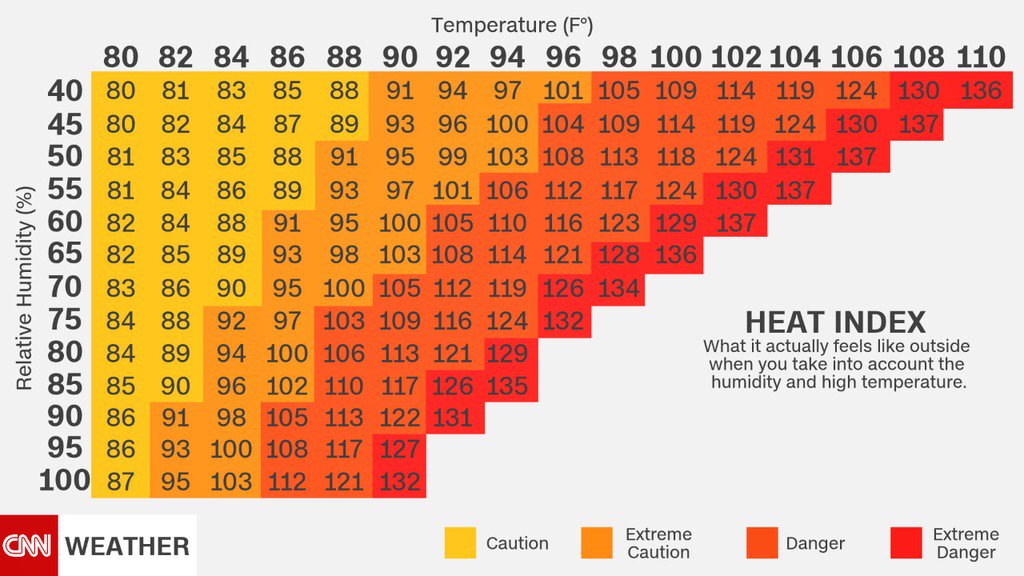
MAINE
MD.
MASS.
MICH.
MINN.
MISS.
MO.
MONT.
NEB.
N.H.
N.J.
N.M.
N.Y.
N.C.
N.D.
OHIO
OKLA.
ORE.
PA.
S.C.
S.D.
TENN.
UTAH
VT.
VA.
WASH.
W.VA.
WIS.
WYO.
CALIF.
NEV.
LA.
TEXAS
ALA.
ARIZ.
ARK.
COLO.
CONN.
DEL.
FLA.
GA.
IDAHO
ILL.
IND.
IOWA
KAN.
KY.
MAINE
MD.
MASS.
MICH.
MINN.
MISS.
MO.
MONT.
NEB.
N.H.
N.J.
N.M.
N.Y.
N.C.
N.D.
OHIO
OKLA.
ORE.
PA.
R.I.
S.C.
S.D.
TENN.
UTAH
VT.
VA.
WASH.
W.VA.
WIS.
WYO.
CALIF.
NEV.
LA.
TEXAS
ALA.
ARIZ.
ARK.
COLO.
CONN.
DEL.
FLA.
GA.
IDAHO
ILL.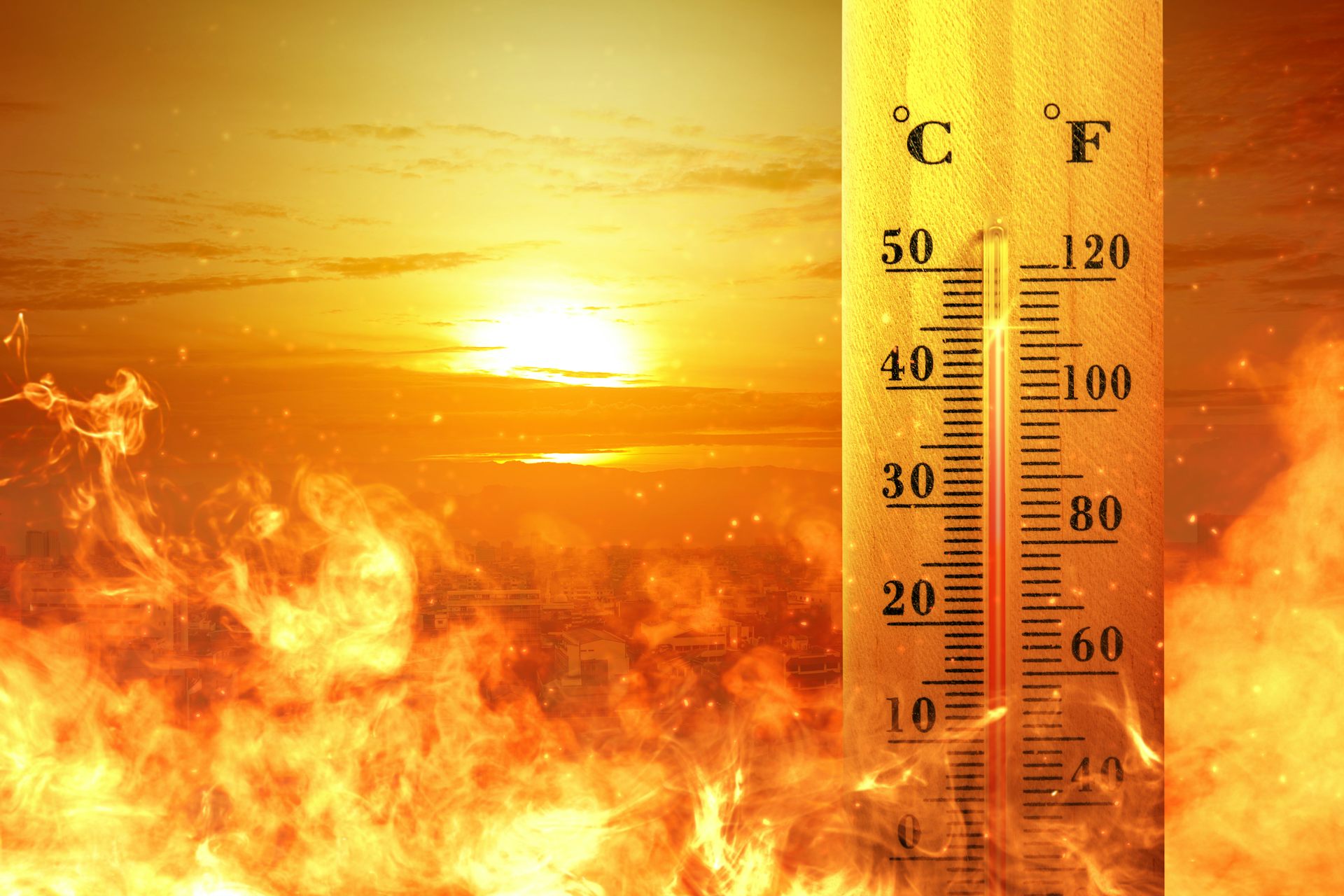
IND.
IOWA
KAN.
KY.
MAINE
MD.
MASS.
MICH.
MINN.
MISS.
MO.
MONT.
NEB.
N.H.
N.J.
N.M.
N.Y.
N.C.
N.D.
OHIO
OKLA.
ORE.
PA.
R.I.
S.C.
S.D.
TENN.
UTAH
VT.
VA.
WASH.
W.VA.
WIS.
WYO.
Source: NOAA
Map shows the highest forecast heat index level on Monday.
Jump to:
Your areaMajor citiesThe week ahead
About 57.4 million people — 17 percent of the population of the contiguous United States — live in the areas expected to have dangerous levels of heat.
The heat index is a measure of how hot it really feels outside, taking into account humidity along with temperature. The measurement is used to indicate when the level of heat is dangerous for the human body while in the shade. When out in the sun, a person could perceive that temperature as being higher by up to 15 degrees Fahrenheit (8. 3 degrees Celsius).
3 degrees Celsius).
Risks associated with heat index levels
Caution
Fatigue is possible after long exposure or exercise.
A heat index of 80 to 90 degrees Fahrenheit
Extreme caution
Possible risk of heat stroke, heat cramps or heat exhaustion after long exposure or exercise.
90 to 103 degrees
Danger
Heat cramps or heat exhaustion is likely. After long exposure or exercise, heat stroke is also possible.
103 to 125 degrees
Extreme Danger
Heat stroke is highly likely.
125 degrees or higher
Risk level definitions are from NOAA.
Hundreds of people die from extreme heat in the United States every year. On hot days, the National Weather Service recommends that people drink fluids, stay in cooler rooms, keep out of the sun and check up on relatives and neighbors, especially older people and those who live alone.
How hot will it feel in your area?
Look up the coming week’s forecast for places across the country, and see the heat index forecast in or near your city or town.
Heat index forecast for…
Over the next week in {city_name}, the highest heat index forecast is {weekly_max_temp} degrees {temp_unit} on {weekly_max_day}. Compared with today, forecasts show that the heat index will be {week_outlook}.
Heat forecasts in major cities
During this weeklong period, 64 major cities are forecast, as of Monday, to have dangerous levels of heat on one or more days.
Fayetteville, N.C.
Phoenix, Ariz.
Chandler, Ariz.
Gilbert, Ariz.
Mesa, Ariz.
Tampa, Fla.
Chesapeake, Va.
Glendale, Ariz.
Scottsdale, Ariz.
Peoria, Ariz.
Tempe, Ariz.
Jacksonville, Fla.
Tucson, Ariz.
Raleigh, N.C.
Corpus Christi, Texas
Orlando, Fla.
Durham, N.C.
Laredo, Texas
Baton Rouge, La.
Cary, N.C.
Savannah, Ga.
Lafayette, La.
Key West, Fla.
Houston, Texas
Charlotte, N.C.
St. Petersburg, Fla.
Norfolk, Va.
Hialeah, Fla.
Columbus, Ga.
Brownsville, Texas
Shreveport, La.
Hattiesburg, Miss.
Austin, Texas
Las Vegas, Nev.
Augusta, Ga.
Newport News, Va.
Miami, Fla.
New Orleans, La.
Tallahassee, Fla.
Fort Lauderdale, Fla.
Macon, Ga.
Jackson, Miss.
Gulfport, Miss.
Mobile, Ala.
Charleston, S.C.
Biloxi, Miss.
San Antonio, Texas
Dallas, Texas
Fort Worth, Texas
Tulsa, Okla.
Plano, Texas
Irving, Texas
Garland, Texas
Frisco, Texas
McKinney, Texas
Little Rock, Ark.
Southaven, Miss.
Arlington, Texas
Grand Prairie, Texas
Olive Branch, Miss.
Memphis, Tenn.
Killeen, Texas
Lincoln, Neb.
Topeka, Kan.
Source: NOAA
Values shown represent the highest forecast heat index level for each day. Forecast data is as of 7:33 a.m. on July 3, 2023.
The week ahead across the nation
While next-day forecasts can be quite accurate, forecasts become less reliable the further into the future they predict. Over the next week, dangerous levels of heat are expected in the South, Midwest and West.
Over the next week, dangerous levels of heat are expected in the South, Midwest and West.
Heat index forecast for the next six days
Maps show the highest level forecast each day.
Caution
Feels like 80°-90°
Extreme caution
90°-103°
Danger
103°-125°
Tuesday, July 4
Wednesday, July 5
Thursday, July 6
Friday, July 7
Saturday, July 8
Sunday, July 9
Source: NOAA
Summer temperatures have become hotter and more extreme in recent decades, and the health effects of extreme heat can be severe.
Methodology
Maps on this page are as of 7:33 a.m. on July 3, 2023, using data from the National Oceanic and Atmospheric Administration. All data shown are forecasts, including maps for the date of publication.
The highest forecast heat index is calculated using all available hourly forecasts for each day published by the NOAA. For some days further in the future, forecasts are published only every three or six hours. This means that the highest forecast heat index numbers are more accurate for the most recent maps.
This means that the highest forecast heat index numbers are more accurate for the most recent maps.
Population calculations are based on census tract population centers from the U.S. Census Bureau. Tracts are determined to be at risk of dangerous heat if the population center of the tract is forecast to be exposed to a heat index of 103 degrees Fahrenheit or more.
The temperature has risen. What you need to know
37.0 — is this already a disease? When should you take an antipyretic? Can heat kill? Why is it advised to eat less at a temperature? We analyze popular questions
Usually we consider a fever a sign of SARS, influenza or other infectious disease. However, it can also jump after vaccination, although there is no infection in the body. Deviations from the temperature norm have dozens of reasons. To understand why this happens, it is worth learning more about the thermoregulation of our body.
In 1851, the German physician and scientist Karl Wunderlich summarized the results of a million temperature measurements in the armpits of patients and for the first time established the normal limit of 37°C, or 98.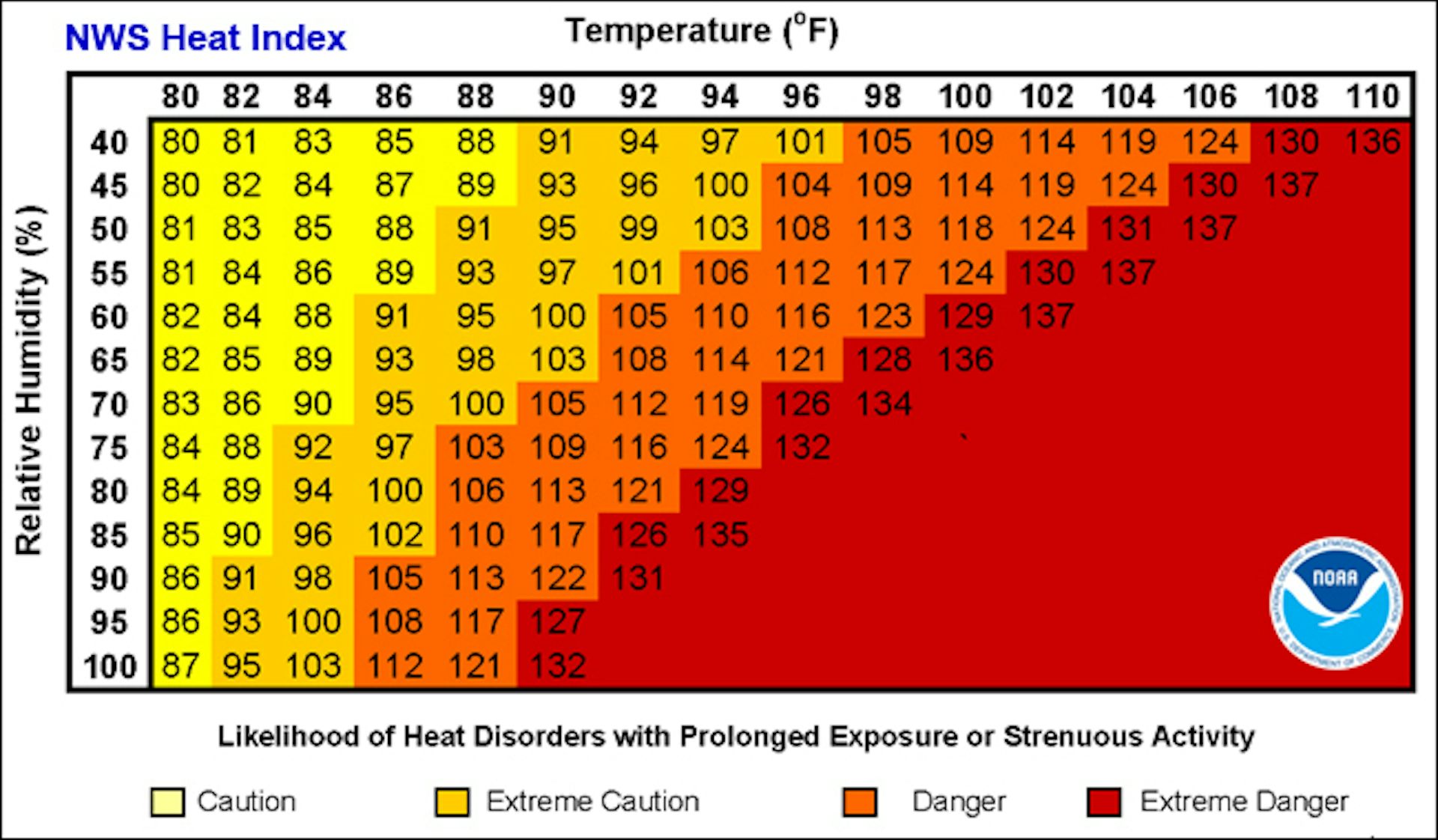 6°F. He also put into practice regular measurements of the temperature of patients and argued that fever (fever) is not the disease itself, but its symptom.
6°F. He also put into practice regular measurements of the temperature of patients and argued that fever (fever) is not the disease itself, but its symptom.
However, later studies revised Wunderlich’s estimate and reduced the rate to 36.6°C. This was due not so much to the scientist’s mistakes as to the improvement in the quality of life. Wunderlich lived in an era when the average life expectancy was 38 years, and many people suffered from chronic infections such as tuberculosis, syphilis and periodontitis. A high level of systemic inflammation in the body could lead to such a norm.
At the same time, the temperature norm also depends on the place of measurement: in the armpit – it is 36.6 ° C, in the anus and vagina – 37.5 ° C; in the mouth – 37.0 ° C. By the way, the axillary method is considered the least accurate, but it has entered hospital practice as the simplest and most hygienic. For example, in the United States at home, a thermometer is placed in the mouth. But not any thermometer is suitable for this, you need a special one.
No. The temperature depends on daily biological cycles (at night and in the morning it is lower than during the day and in the evening), physical and mental activity, emotional state (fear, stress), and ambient temperature. Also, temperature regulation is disturbed by drug and alcohol intoxication. A constant temperature of 37.2 ° C can be in women during the period of ovulation and in pregnant women. Therefore, it is important to measure the temperature, if possible, in a calm, unexcited state.
Without illness or other physiological disturbances, the temperature will not exceed 37.2°C. But then begins what experts call subfebrile (from the Latin febris – fever) temperature – from 37.2 to 37.8 or even 38.0 ° C. Usually she speaks of a sluggish inflammatory process, that the body is fighting infections, and other disorders.
Subfebrile temperature can be distinguished by other signs of the disease – weakness, headache, sweating and body aches.
Yes, but not only.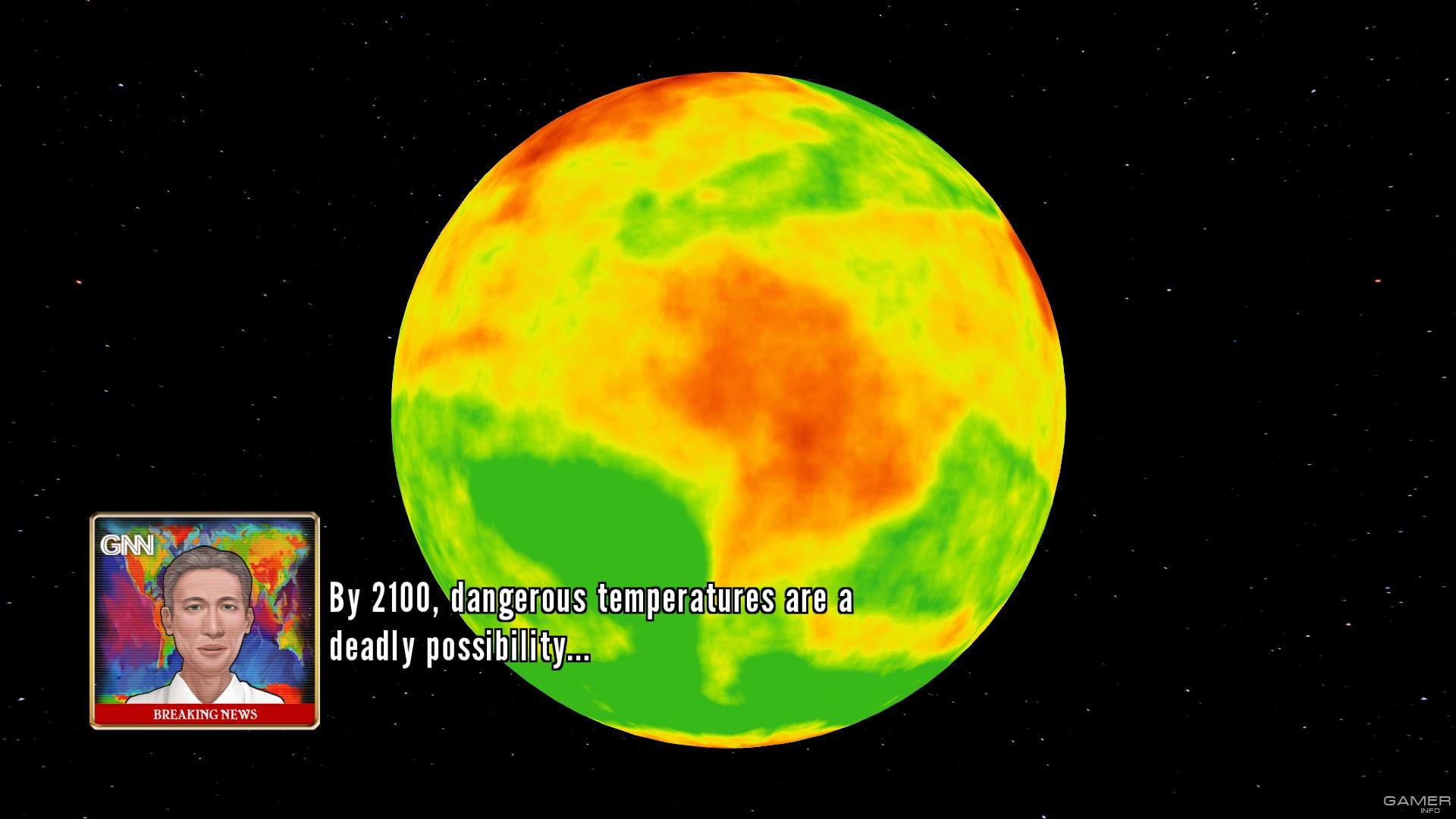 Subfebrile temperature can be observed in hundreds of different conditions. These can be various kinds of infections (for example, this is one of the symptoms of early tuberculosis), poisoning, dental diseases, allergic reactions, latent autoimmune diseases and chronic pathologies.
Subfebrile temperature can be observed in hundreds of different conditions. These can be various kinds of infections (for example, this is one of the symptoms of early tuberculosis), poisoning, dental diseases, allergic reactions, latent autoimmune diseases and chronic pathologies.
The temperature within these limits can also increase after receiving a dose of ionizing radiation of 2 to 4 Gy, against the background of hormonal changes in women during menopause. With prolonged or very acute stress, the body can also respond with an increase in temperature – this condition is called psychogenic fever, or thermoneurosis.
It is worth noting that such a temperature in itself does not harm the body. It is simply a tool the body uses to deal with real or imagined threats. For example, an increase in temperature after vaccination is considered a variant of the norm: the body thinks that it is being attacked, and just in case, it “alarms” all defenses.
Infectious agents such as viruses, bacteria and fungi do not live comfortably at certain temperatures. Let’s say 37.0 is already above the average annual temperature of any place on Earth, including the Sahara and the South American tropics. And the higher the column crawls, the worse it is for microorganisms. For example, biologist Arturo Casadevall studied the temperature preferences of 4,082 species of lower fungi. It turned out that less than a third survive at temperatures above 37°C, and only five percent grow at 41°C.
Let’s say 37.0 is already above the average annual temperature of any place on Earth, including the Sahara and the South American tropics. And the higher the column crawls, the worse it is for microorganisms. For example, biologist Arturo Casadevall studied the temperature preferences of 4,082 species of lower fungi. It turned out that less than a third survive at temperatures above 37°C, and only five percent grow at 41°C.
An increase in temperature is an element of non-specific (aimed at a wide range of threats) immunity. The hypothalamus, located at the base of the brain, is responsible for temperature regulation. It responds to signals from biochemical substances floating in the blood, called pyrogens (from other Greek πῦρ – “fire”). At elevated temperatures, metabolic processes are faster, and therefore the action of immune cells is accelerated.
Pyrogens are secreted mainly by cells of the immune system (monocytes, macrophages, T- and B-lymphocytes). When the hypothalamus detects them, it tells the body to generate and retain more heat, causing a fever. In children, the temperature usually rises faster because their immune system is still immature.
In children, the temperature usually rises faster because their immune system is still immature.
It should be said right away that mercury thermometers in Russia have been banned for production since 2020. This is due to the fact that in 2014 Russia signed the Minamata Convention on Mercury, which requires the production, export and import of goods containing mercury and mercury compounds to be stopped.
The advantages of mercury thermometers are their high accuracy (0.1°C error) and reliability. Mercury expands itself due to heat, does not require batteries and microcircuits. But these benefits are outweighed by the health risks posed by mercury vapor from a broken appliance.
Electronic thermometers are more “capricious”, although formally their accuracy is the same. They use a thermal sensor, so they need to be pressed closer to the body – and it is best to measure them orally or rectally. If you do not change the battery in time, the device will begin to “lie”.
But infrared thermometers have lower accuracy. This is due to the fact that the measuring beam passes through the air, which has its own temperature, and this distorts the result (up to 0.2°C). But it gives the result in a matter of seconds, and is convenient when you need to identify a febrile temperature.
A medical thermometer usually ends at 45°C. At 42°C, irreversible decomposition of proteins in the body begins, at 43°C, denaturation (thermal decay) of proteins in brain neurons, which leads to inhibition of brain functions, coma and death.
But even a temperature above 38°C (it is called febrile) is already quite difficult for the body. Blood pressure rises, heart rate rises, the number of decay products of bacteria in the blood increases, which can cause symptoms of poisoning and disrupt brain function (hence hallucinations).
Consequences of prolonged fever may include fainting, heart and kidney failure, dehydration, digestive and nervous system disorders.
As we found out, the temperature helps to fight the disease. Therefore, doctors usually advise taking antipyretics only when the temperature exceeds 38-38.5 ° C. But it depends on the state of the person himself, on how he tolerates the fever. In this case, an overdose of the drug can cause serious damage to the liver, kidneys, gastrointestinal tract, heart and brain.
If the fever is due to hormonal causes, such as hot flashes during menopause or a thyroid disorder (hyperthyroidism), these medicines will not work. In such cases, cooling treatments such as rubbing with a damp towel or bathing in cool water help.
As far back as the 1574 dictionary of John Whizels, it was noted that “fasting is an excellent remedy for fever.” But if the recommendation to drink more fluids has an obvious explanation (replenish fluid balance and remove the breakdown products of pathogens from the body), then what about the advice to eat less?
On the one hand, in order to maintain a high temperature, the body needs additional energy, which it can get from food.![]() Fasting also creates additional stress. On the other hand, overeating and eating too spicy, unusual, unfamiliar foods can be harmful. The body may misinterpret certain substances as allergens and provoke a reaction.
Fasting also creates additional stress. On the other hand, overeating and eating too spicy, unusual, unfamiliar foods can be harmful. The body may misinterpret certain substances as allergens and provoke a reaction.
Such a method exists. For example, in the middle of the 20th century, the German physician von Ardenne began to use it on cancer patients as a means of “last hope”. The fact is that cancer cells die at temperatures close to 42°C. Von Ardenne was able to heat patients up to 41.8°C. True, no more than 17% of them survived, but they were cured.
The “water” method was used for heating. The patient was placed in a special bath and with the help of water-jet devices placed over the patient, and poured over with heated water. Body temperature should have risen to 42-43°C. This procedure lasted about 6 hours under general anesthesia. The head was cooled with a special helmet. Later in the USSR, the idea of heating with microwaves was developed.
Hyperthermia can help treat cancers that are difficult to operate on (eg, brain, mouth, and neck tumors). Heated tissues are more sensitive to ionizing radiation, which increases the effectiveness of radiotherapy. The problem is that it is not yet possible to concentrate the source of thermal radiation exactly at the site of the tumor without affecting other tissues.
Heated tissues are more sensitive to ionizing radiation, which increases the effectiveness of radiotherapy. The problem is that it is not yet possible to concentrate the source of thermal radiation exactly at the site of the tumor without affecting other tissues.
Nevertheless, in recent years, the interest in therapeutic hyperthermia among scientists has been growing due to the development of new technologies. For example, one of the recent ideas involves the use of magnetic nanoparticles that can be injected directly into tumor tissue and heated from the inside using an alternating magnetic field.
“Embryos” from stem cells. Why are they needed and how to treat them in general?
In June, several research groups announced successful experiments with “synthetic embryos” – similarities of human embryos. To create them, scientists dispensed with both sperm and eggs. From an ethical (and legal) point of view, the resulting models fall into a gray area. It is not even clear how to call them correctly.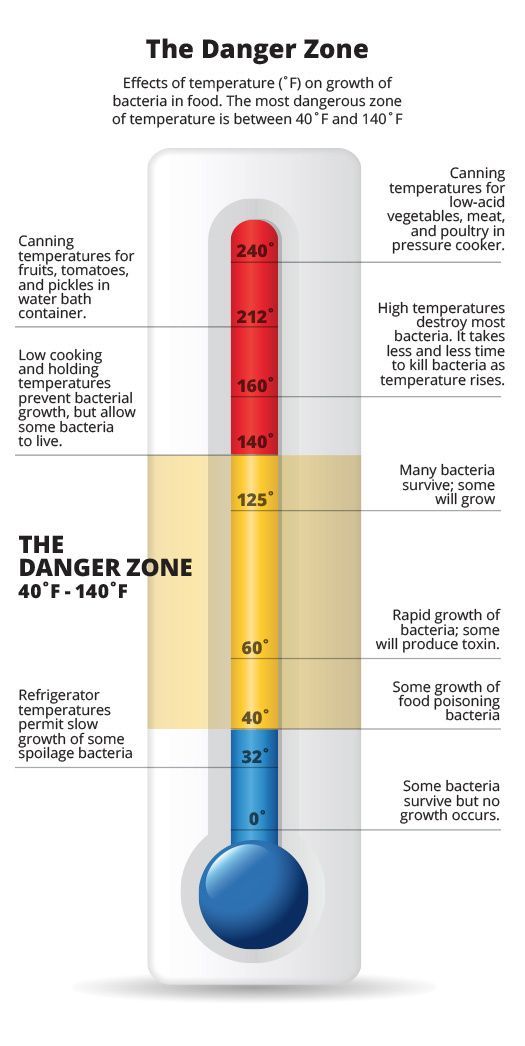 Optimists hope that embryonic models will help answer fundamental questions and be useful in medicine, but there are doubts about this
Optimists hope that embryonic models will help answer fundamental questions and be useful in medicine, but there are doubts about this
Read more
Model List and Criteria for Hazardous Meteorological Phenomena
Model List and Criteria for Hazardous Meteorological Phenomena
Hazardous meteorological phenomena (HH) are weather phenomena that pose a threat to safety by intensity, duration and time of occurrence people , and can also cause significant damage to sectors of the economy.
Based on the typical (exemplary) list of hazards below, the territorial departments of the hydrometeorological service (UGMS) compile a list of hazards adjusted to local specifics for their service area.
Name of OY | Characteristics and criteria or definition of HE |
A. wind | Wind when reaching a speed with gusts of at least 25 m/s, or an average speed of at least 20 m/s; on the coasts of the seas and in mountainous areas 35 m/s or an average speed of at least 30 m/s |
A.2 Hurricane wind (hurricane) | Wind at a speed of 33 m/s or more |
A.3 Flurry | Sudden short-term (within several minutes, but not less than 1 min) wind increase up to 25 m/s and more |
A.4 Tornado | Strong small-scale vortex in the form of a column or funnel directed from the cloud to the underlying surface |
A.5 Heavy rain | Heavy rain showers with at least 30 mm of precipitation over a period of not more than 1 hour |
A. very heavy snow with rain) | Rainfall, heavy rain, rain with snow, sleet with a quantity of at least 50 mm, in rainy (mudflow) mountainous areas – at least 30 mm for a period of time not more than 12 hours |
A.7 Very heavy snow | Snowfall, shower snow with an amount of at least 20 mm for a period of time not exceeding 12 hours |
A.8 Continuous heavy rain | Rain with short breaks (not more than 1 hour) with a rainfall of at least 100 mm (in rainy areas with a rainfall of at least 60 mm) for a period of more than 12 hours but less than 48 hours, or 120 mm for a period of more than 2 day |
A.9 Large hail | Hail, diameter 20 mm or more |
A. | The transport of snow from the underlying surface (often accompanied by snowfall from clouds) by strong winds (at an average speed of at least 15 m/s) and with a meteorological visibility range of not more than 500 m for a duration of at least 12 hours |
A.11 Heavy dusty (sand) storm | Carrying of dust (sand) by strong (with an average speed of at least 15 m/s) wind and with a meteorological visibility range of not more than 500 m for a duration of at least 12 hours |
A.12 Heavy fog (heavy mist) | Severe turbidity of the air due to the accumulation of the smallest particles of water (dust, combustion products), in which the value of the meteorological visibility range is not more than 50 m for a duration of at least 12 hours |
A. | Wire deposit diameter: ice – not less than 20 mm in diameter; complex deposits or wet (freezing) snow – not less than 35 mm in diameter; rime – deposit diameter not less than 50 mm |
A.14 Severe frost | In the period from November to March, the value of the minimum air temperature reaches the dangerous value established for the given territory or below it |
A.15 Extremely cold weather | In the period from October to March, for 5 days or more, the value of the average daily air temperature is below the climatic norm by 7 °C or more |
A.16 Extreme heat | In the period from May to August, the value of the maximum air temperature reaches or exceeds the value set for the given territory. |
A.17 Frost | Decrease in air temperature and/or soil surface (grass stand) to values below 0°C against the background of positive average daily air temperatures during periods of active vegetation of crops or harvesting, leading to their damage, as well as to partial or complete loss of crops |
A.18 Extremely hot weather | In the period from April to September, for 5 days or more, the value of the average daily air temperature is above the climatic norm by 7 °C or more |
A.19 Extreme fire hazard | Fire hazard index refers to the 5th class (10,000 °C according to Nesterov’s formula) |
unfavorable meteorological phenomena include meteorological phenomena, which by their characteristics (intensity, duration) do not reach the criteria of the HH, but significantly impede the activity of certain sectors of the economy.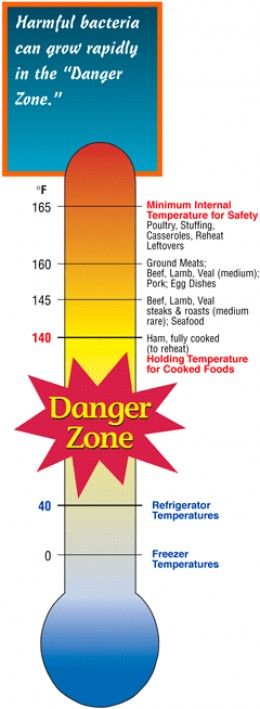

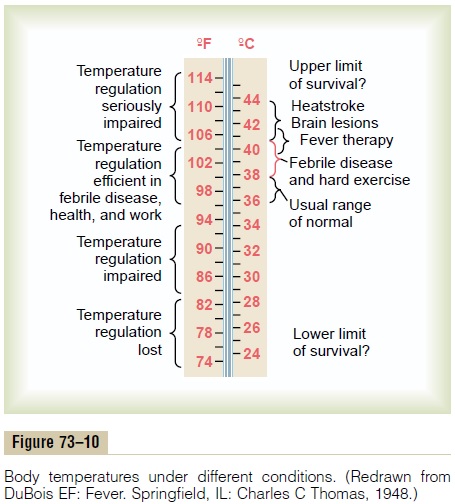 (2014, January 25). Retrieved from
(2014, January 25). Retrieved from

 1 Very strong
1 Very strong 6 Very heavy rain (very heavy sleet, very heavy sleet,
6 Very heavy rain (very heavy sleet, very heavy sleet, 10 Heavy snowstorm
10 Heavy snowstorm 13 Heavy ice-hoar frost deposits
13 Heavy ice-hoar frost deposits